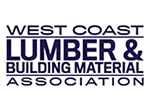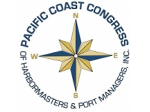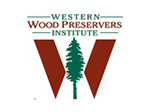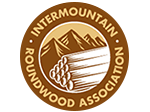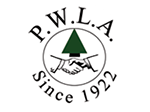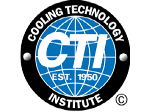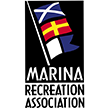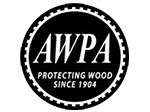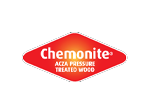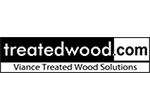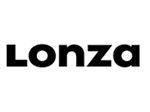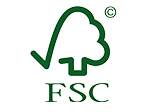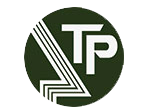Chemonite®
![]()
Chemonite® is a registered trade name for wood protected with ACZA (Ammoniacal Copper Zinc Arsenate) preservative. It is the only AWPA accepted waterborne preservative capable of meeting penetration standards for Coastal Douglas Fir at every exposure level and for all applications from 0.25 to 2.50 pounds per cubic foot of wood by assay.
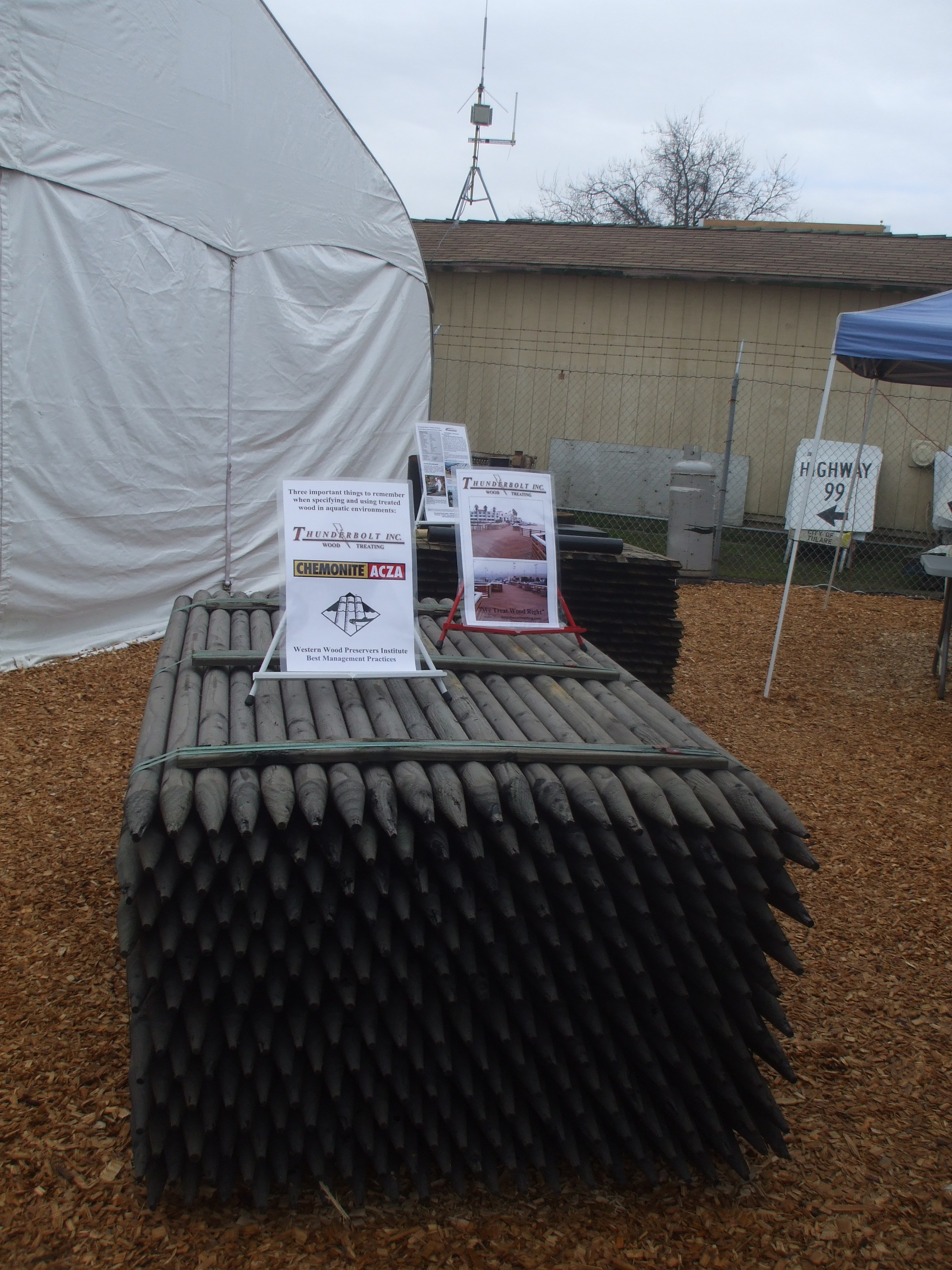 Since the early 1940s ACZA has been safely and successfully used to treat Douglas Fir and other refractory wood species. Chemonite® wood offers all the appealing characteristics of natural wood along with prolonging the life cycle of wood products and providing protection against the major causes of wood degradation such as fungal decay, termites and marine organisms. Additionally, studies indicate that Chemonite® is resistant to carpenter ants, woodpeckers and shows fire resistant properties.
Since the early 1940s ACZA has been safely and successfully used to treat Douglas Fir and other refractory wood species. Chemonite® wood offers all the appealing characteristics of natural wood along with prolonging the life cycle of wood products and providing protection against the major causes of wood degradation such as fungal decay, termites and marine organisms. Additionally, studies indicate that Chemonite® is resistant to carpenter ants, woodpeckers and shows fire resistant properties.
Chemonite® is more difficult to ignite than untreated lumber. Tests conducted by Underwriters Laboratories Inc. confirm the fire resistant properties of Chemonite®
- Douglas Fir lumber treated with 0.35 pcf of ACZA had a 41.7 flame spread rating, which is a Class-B rating
- Douglas Fir lumber treated with 1.86 pcf of ACZA had a 24.8 flame spread rating, which is a Class-B rating
Chemonite® is accepted and specified to protect wood in commercial and industrial applications for both public and private sector general construction projects. Chemonite® pressure treated wood products meet the International Building Code (IBC) and American Wood Protection Association (AWPA) Standards.
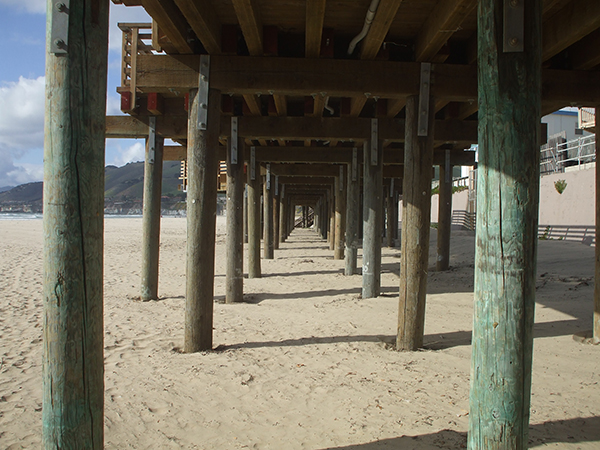 The AWPA Use Category System provides the proper guidance for the end-use applications (i.e. above ground exposure, ground contact and structural applications, and for use in Fresh water or Salt water applications). Because of the long lasting capabilities of Douglas Fir pressure treated with ACZA, it is frequently used for industrial and commercial applications such as: Bulkheads, wing walls, wharfs, docks, piers, marinas, bridges and decking. Chemonite® is extremely effective against major marine organisms that attack wood. The three species are Gribbles (Limnoria, Chelura & Sphaeroma), Toredos or Shipworms (Bankia), and Pholadidaes.
The AWPA Use Category System provides the proper guidance for the end-use applications (i.e. above ground exposure, ground contact and structural applications, and for use in Fresh water or Salt water applications). Because of the long lasting capabilities of Douglas Fir pressure treated with ACZA, it is frequently used for industrial and commercial applications such as: Bulkheads, wing walls, wharfs, docks, piers, marinas, bridges and decking. Chemonite® is extremely effective against major marine organisms that attack wood. The three species are Gribbles (Limnoria, Chelura & Sphaeroma), Toredos or Shipworms (Bankia), and Pholadidaes.
When handling Chemonite® treated wood we recommend using the US EPA minimum protection precautions and Personal Protective Equipment (PPEs). Gloves should be worn at all times to avoid splinters. Dust masks and goggles should be worn when sawing or drilling. Wash hands prior to eating or smoking. Please be sure to read the full text of the Consumer Safety Information Sheet prior to handling treated wood products. More information can be found on this website or at www.acza.com.
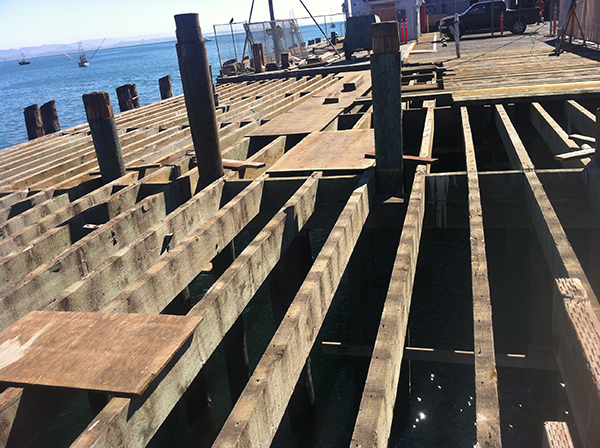 When Chemonite® treated wood must be cut or drilled in the field, the exposed cut end or hole must be painted in accordance with AWPA M4. The acceptable product must contain Copper Naphthenate with a recommended minimum 2.0% copper metal. The use of Copper Naphthenate with 1.0% metal is acceptable in regions of the country where the higher concentration material is not readily available.
When Chemonite® treated wood must be cut or drilled in the field, the exposed cut end or hole must be painted in accordance with AWPA M4. The acceptable product must contain Copper Naphthenate with a recommended minimum 2.0% copper metal. The use of Copper Naphthenate with 1.0% metal is acceptable in regions of the country where the higher concentration material is not readily available.
Not all treated wood provides equal performance. Treated wood products must adhere to AWPA Standards and have an American Lumber Standards Committee (ALSC) approved inspection agency certifying the treating process for penetration and retention of preservative. Each piece must have an end-tag or stamp specifying the AWPA Standard, retention and preservative. Look for the CheckMark® next to the inspection agency logo for verification of properly treated wood.
2003 & 2006 International Building Code – Fasteners – Section 2304.9.5
“Fasteners for pressure-preservative treated wood shall be of hot-dipped galvanized (HDG), Stainless steel, Silicon bronze or copper. Coating weights for zinc-coated fasteners shall be in accordance with ASTM (American Society for Testing and Materials) A-153”
Around water, avoid corrosion by specifying all treated wood and timber products be properly air seasoned or Kiln Dried prior to installation.
Specify BMP Production
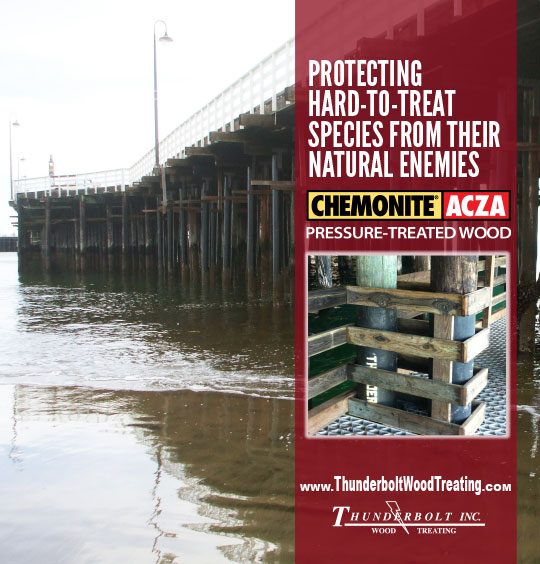 Best Management Practices (BMPs) Quality Assurance Program, published by the Western Wood Preservers Institute (WWPI) provides specific parameters for pressure–treated wood products for use in sensitive aquatic environments in the Western United States and Canada. Its goal is to minimize the amount of preservative in the wood while assuring conformance with the established treating practices of the AWPA. In sensitive aquatic environments BMPs should be specified and certified to assure that treated wood products are manufactured in a manner that minimizes any potential for adverse impacts.
Best Management Practices (BMPs) Quality Assurance Program, published by the Western Wood Preservers Institute (WWPI) provides specific parameters for pressure–treated wood products for use in sensitive aquatic environments in the Western United States and Canada. Its goal is to minimize the amount of preservative in the wood while assuring conformance with the established treating practices of the AWPA. In sensitive aquatic environments BMPs should be specified and certified to assure that treated wood products are manufactured in a manner that minimizes any potential for adverse impacts.
DO NOT BURN TREATED WOOD PRODUCTS
Documentation
Safety Data Sheet
Chemonite Brochure July 2015
Chemonite Wood in Marine Use
Chemonite LCA Summary
Piling Specification for Marine Use
ACZA Chemonite for Utility Poles
